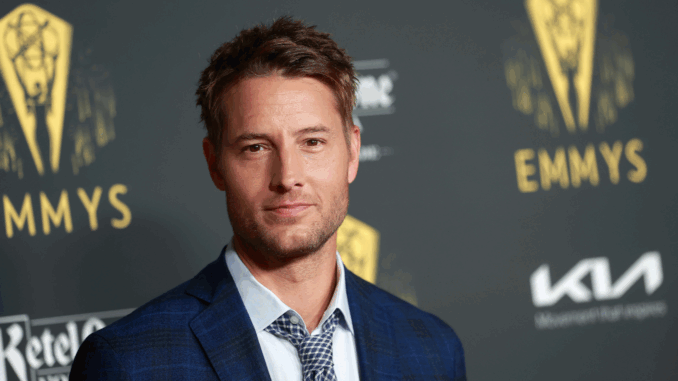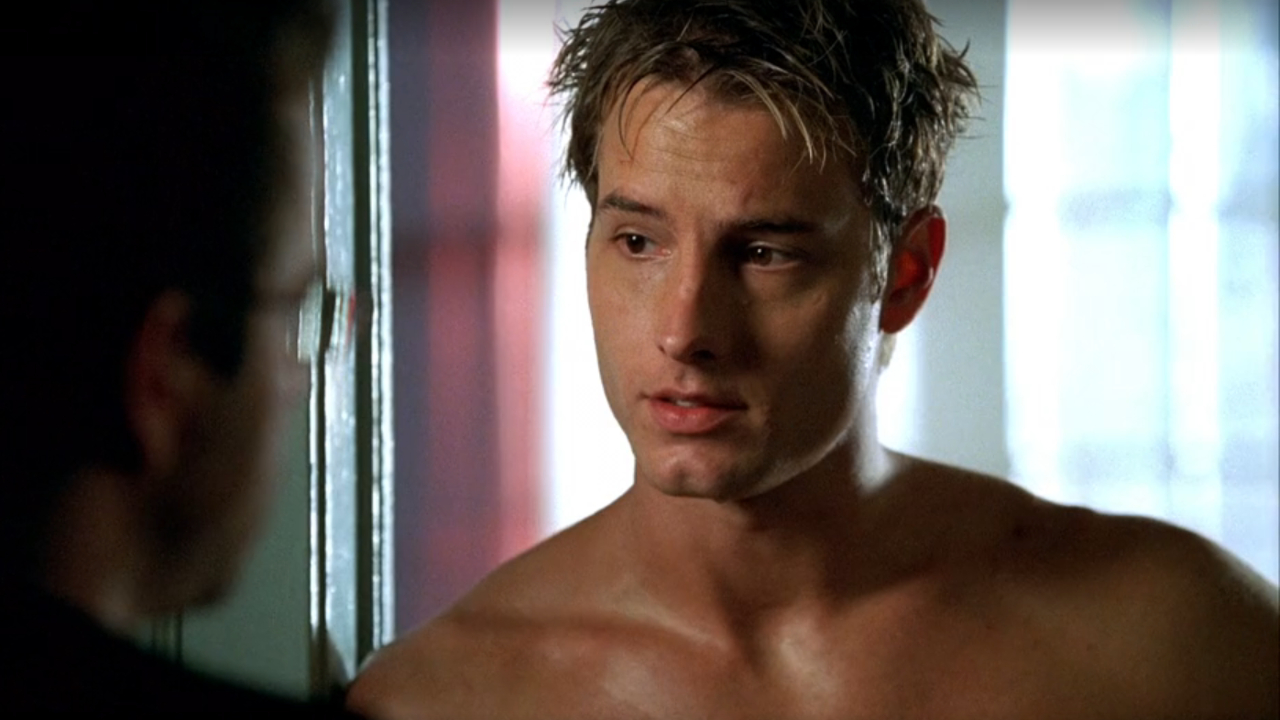
Justin Hartley is an actor renowned for his compelling performances and his ability to fully inhabit each character he portrays. From his breakout role as Kevin Pearson in This Is Us to his more recent work as Colter Shaw in Tracker, Hartley has built a reputation not only for his talent but also for the meticulous preparation that underpins every performance. For Hartley, preparation is not a simple checklist but a holistic process that involves emotional, physical, and intellectual engagement with the character. In this article, we explore how Justin Hartley prepares for his most challenging roles, offering insight into the discipline, creativity, and resilience that drive his work.
Understanding the Character Inside and Out
The foundation of Hartley’s approach begins with a thorough understanding of the character. He believes that to portray someone convincingly, an actor must first know them as intimately as they know themselves. This involves a deep dive into the character’s backstory, motivations, and relationships. For Hartley, understanding why a character behaves in certain ways is as important as learning their lines.
Hartley often spends hours reading and re-reading scripts, noting subtle cues in dialogue, tone, and scene direction. He considers each character’s history, their family dynamics, formative experiences, and emotional triggers. This process allows him to anticipate how the character might respond in different situations, making his performances feel spontaneous yet grounded in authenticity. By constructing a detailed mental map of the character, Hartley ensures that every action and reaction on screen is consistent and believable.
In addition to understanding the character’s inner world, Hartley studies how the character fits into the broader narrative. He examines relationships with other characters, the social and cultural context of the story, and the narrative arc that the character must follow. This holistic approach ensures that his performance supports the story as a whole while remaining true to the individuality of the character.
Immersive Techniques and Emotional Connection
To bring depth and authenticity to his roles, Hartley often uses immersive techniques that resemble method acting. While he does not strictly follow a single school of acting, he draws upon personal experiences and emotions to connect with the character’s feelings and reactions. By tapping into his own memories, fears, and desires, Hartley is able to portray characters with a level of vulnerability that resonates deeply with audiences.
For emotionally intense roles, Hartley allows himself to inhabit the character’s psychological and emotional state, sometimes for hours before filming a scene. This can include silently contemplating the character’s past traumas, rehearsing emotionally charged dialogue privately, or visualizing pivotal life events from the character’s perspective. This intense preparation allows him to access the subtle emotional cues that bring authenticity to his performances.
Hartley’s ability to convey complex emotions is evident in roles that demand both sensitivity and strength. Whether he is portraying the quiet grief of Kevin Pearson or the determined, stoic resilience of Colter Shaw, Hartley’s performances consistently communicate a profound sense of realism. His dedication to emotional authenticity often elevates even minor scenes, making every interaction feel meaningful.
Physical Preparation and Skill Development
Many of Hartley’s roles require not just emotional depth but also physical skill and transformation. For example, his role as Colter Shaw in Tracker required him to master survivalist techniques and display proficiency in tracking, combat, and wilderness navigation. Hartley approaches such challenges with the same diligence he applies to character development.
He engages in intensive physical training, tailored to the demands of the character. This might include strength conditioning, endurance exercises, hand-to-hand combat training, or specialized skill development relevant to the role. By aligning his physicality with the character’s lifestyle and abilities, Hartley enhances the believability of his performance.

Research also plays a key role in his preparation. Hartley studies real-life examples, watches documentaries, and consults experts to ensure accuracy. For roles rooted in specific professions or lifestyles, such as firefighting, tracking, or law enforcement, Hartley immerses himself in the technical details, learning the tools, terminology, and routines of the characters he portrays. This rigorous research complements his emotional preparation, resulting in a performance that is both physically convincing and emotionally authentic.
Collaboration and Learning on Set
Hartley emphasizes the importance of collaboration in his preparation process. He views acting not as a solitary pursuit but as a collective endeavor in which directors, writers, and fellow actors all contribute to shaping a performance. By maintaining open communication and being receptive to feedback, Hartley ensures that his interpretation of the character aligns with the overall vision of the production.
On set, Hartley actively observes his colleagues, taking cues from their performances and adapting his approach to create dynamic interactions. He values improvisation within the framework of the script, using his intuition to enhance scenes organically. This flexibility allows him to respond authentically to unplanned moments, maintaining the emotional truth of the performance while contributing to a cohesive narrative.
Hartley also respects the director’s vision and often seeks guidance to refine his portrayal. Whether discussing motivation, adjusting timing, or exploring alternative approaches to a scene, he engages in thoughtful dialogue to elevate the performance. By fostering a collaborative environment, Hartley ensures that the final product reflects both his skill and the shared creative effort of the team.
Mental and Emotional Resilience
Acting can be emotionally taxing, and Hartley acknowledges that challenging roles often demand significant psychological energy. He maintains mental and emotional resilience through self-care, reflection, and preparation that balances intensity with recovery.
Before and after emotionally demanding scenes, Hartley uses techniques such as meditation, visualization, and controlled breathing to manage stress and maintain focus. He recognizes the importance of separating the character’s emotional experiences from his own personal life, preventing emotional burnout while staying connected to the role.
This disciplined approach allows Hartley to navigate roles that explore grief, trauma, or moral complexity without compromising his well-being. It also ensures that he can deliver consistently high-quality performances throughout the production schedule.
Continuous Learning and Growth
Hartley views every role as an opportunity for growth. He studies the work of other actors, attends workshops, and seeks mentorship to continually refine his craft. This commitment to lifelong learning keeps his performances fresh and dynamic, allowing him to tackle increasingly complex and demanding roles.
For Hartley, acting is not simply about memorizing lines or executing blocking; it is about inhabiting a human experience and translating it authentically to the screen. By combining study, practice, and introspection, he pushes the boundaries of his abilities and deepens the impact of his performances.
Case Studies: Kevin Pearson and Colter Shaw
Hartley’s role as Kevin Pearson in This Is Us demonstrates his commitment to emotional depth. Kevin’s arc involves grief, addiction, and complex family dynamics, requiring Hartley to navigate intense emotional landscapes. He prepared for this role by exploring personal memories, engaging in character exercises, and collaborating closely with the ensemble cast to ensure emotional coherence across intertwined storylines.
Similarly, in Tracker, Hartley’s portrayal of Colter Shaw demanded physical skill and strategic thinking. He trained extensively in survival skills, studied tracking techniques, and honed his physical endurance. Beyond physical preparation, Hartley invested in understanding Colter’s psychology, motivations, and moral code, resulting in a performance that balances intellect, strength, and emotional nuance.
Conclusion
Justin Hartley’s preparation for challenging roles exemplifies the dedication, discipline, and creativity required to achieve exceptional acting. Through comprehensive character study, immersive emotional techniques, rigorous physical training, collaborative engagement, and mental resilience, Hartley delivers performances that resonate deeply with audiences.
His commitment to authenticity, both emotionally and physically, sets him apart as an actor willing to invest fully in his craft. By continuously seeking growth and embracing the complexity of each character, Hartley remains one of Hollywood’s most versatile and respected performers. Whether portraying a vulnerable family man or a resourceful survivalist, his meticulous preparation ensures that every role is more than a performance — it is a fully realized human experience.
In an industry often defined by fleeting impressions, Justin Hartley’s approach is a reminder that excellence comes from preparation, empathy, and the courage to fully inhabit another life, one role at a time.
